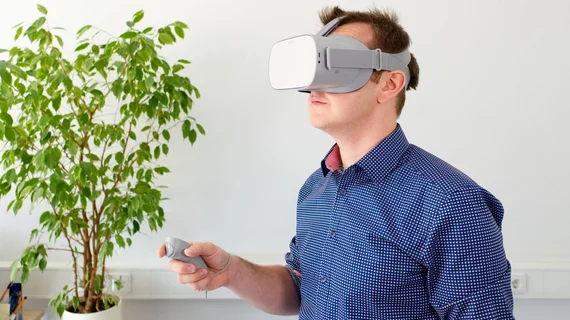Virtual patients making fans of actual physicians
An AI startup’s virtual-patient technology is good enough at teaching empathy to clinicians that it’s already in use at Cedars-Sinai Medical Center in Los Angeles, the National Health Service in Britain and the University of Texas Medical Branch in Galveston.
The toolkit has also caught the eye of a Washington Post reporter whose main beat is innovations.
A version of the technology developed and marketed by U.K.-based Virti uses cloud-based speech recognition, AI and computer-generated characters to simulate realistic interactions with patients, writes Post reporter Dalvin Brown.
“[If] a clinician asks the animated human to describe its symptoms, the AI will generate a relevant response. … For greater immersion, the company can supply physicians with virtual reality headsets.”
Brown speaks with Dr. Alex Young, the orthopedic surgeon who founded the company, and with a podiatrist who ordered Virti to take it for a test drive while under a COVID lockdown.
In-person scenarios featuring “injured” play-actors can “feel a bit forced,” the podiatrist tells the Post. By contrast, he says, fake patients “feel much more authentic than somebody making it up as they go along.”
WaPo article here.

